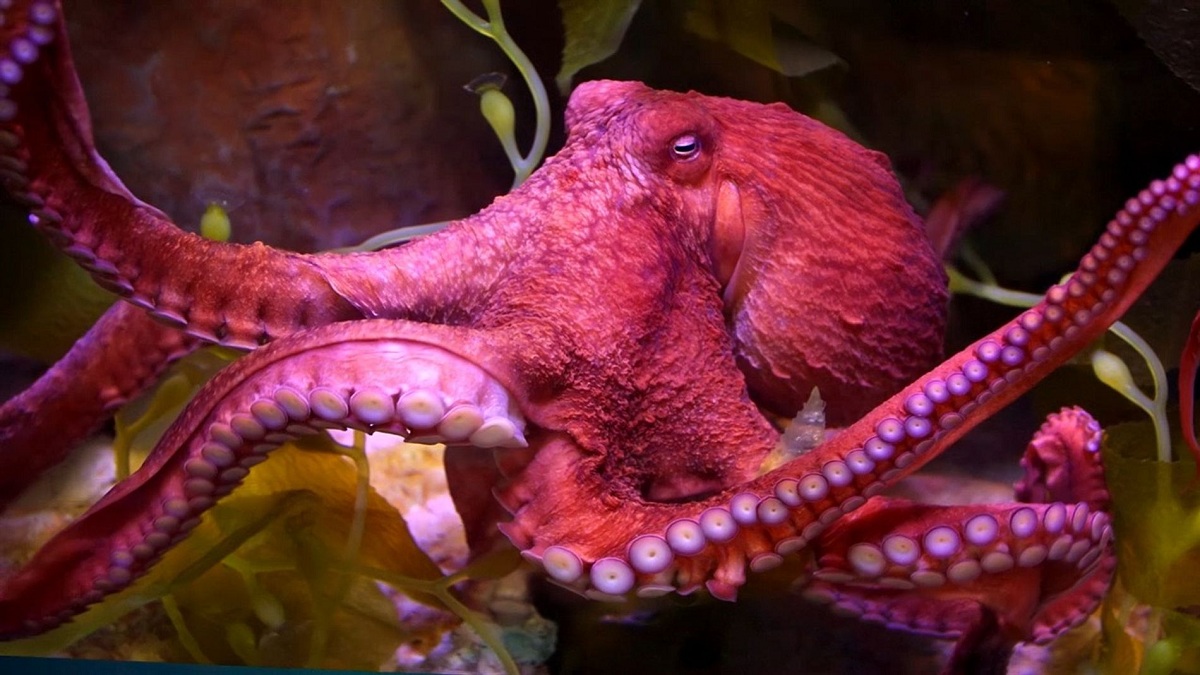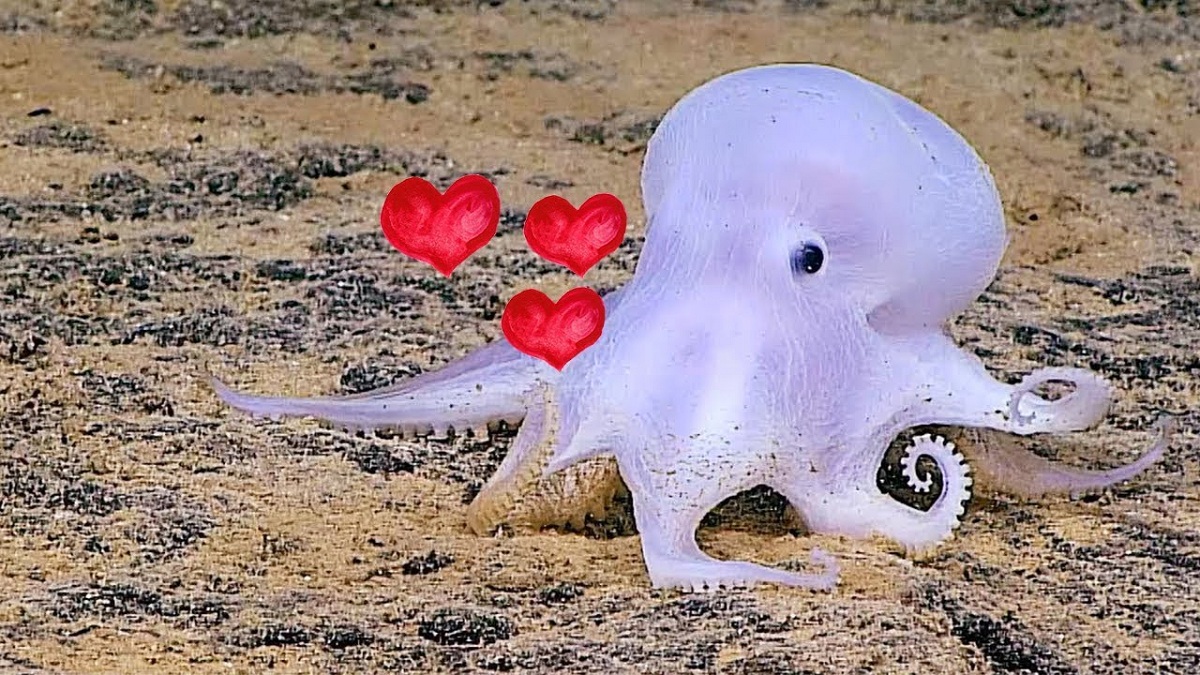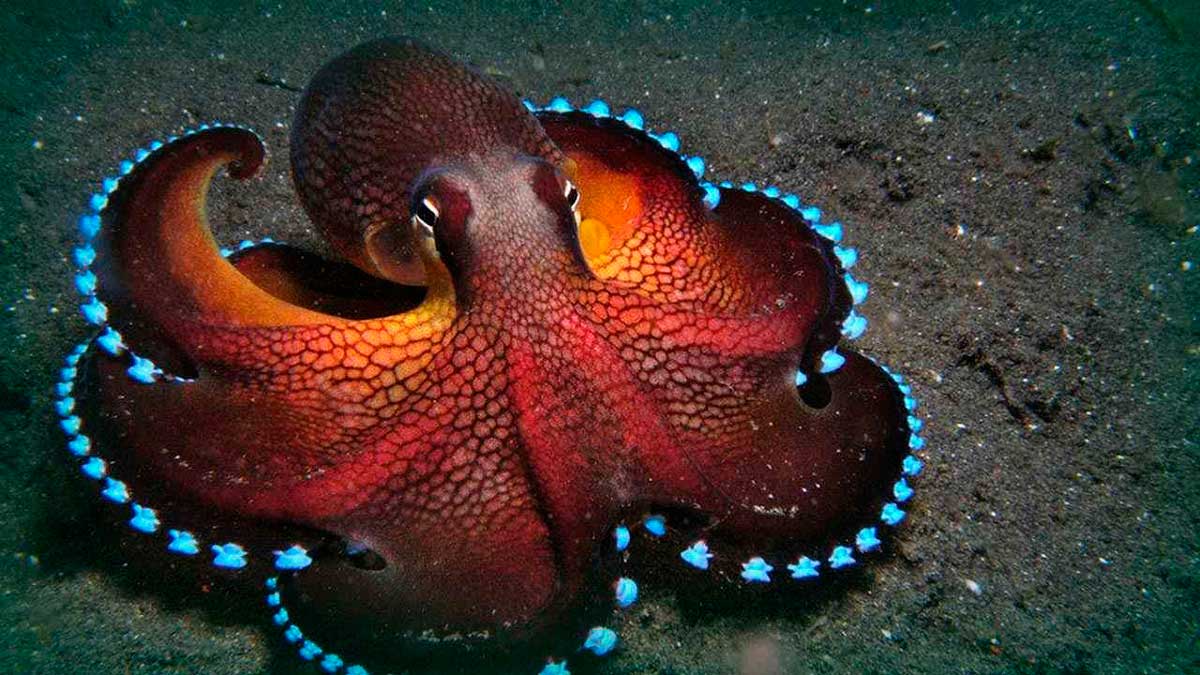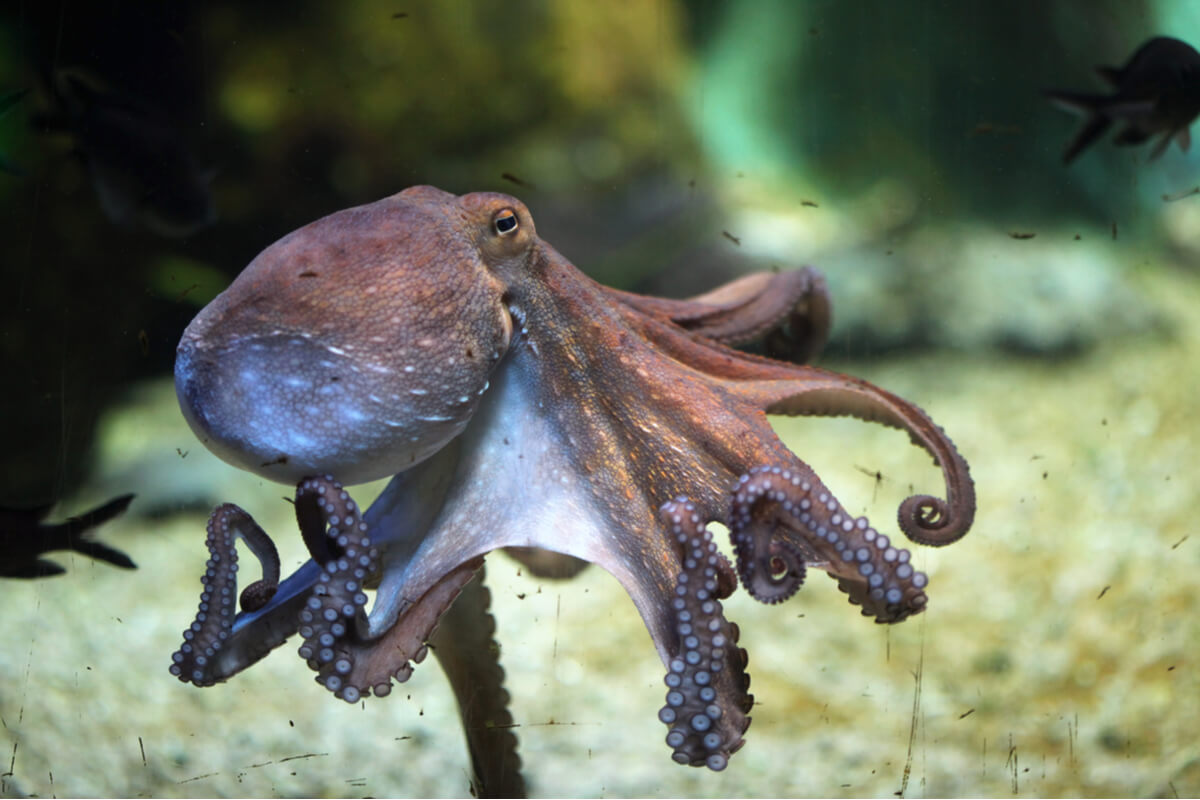
The octopus with about 300 species, has eight arms equipped with suction cups and travels the oceans from coastal areas to the frigid waters of the deep ocean. They are considered the group of invertebrates with the greatest intelligence and learning capacity because they have a very complex nervous system and, in turn, are part of the only class of molluscs with a closed circulatory system. However, not many people know how many hearts does an octopus have.
For this reason, we are going to dedicate this article to telling you how many hearts an octopus has, its characteristics and some of its most interesting curiosities.
Characteristics and habitat

The body of each octopus is divided into three distinct regions:
- Head: Among them were the eyes of the octopus, which contained its brain (nervous system) and heart (three of them: two that carry blood to the gills and respiration, and one that pushes oxygenated blood to the rest of the body).
- Mantle: They connect the extremities to the diffuse area of the head, where the rest of the internal organs of the animal are located, from where the horny beak comes out to feed, siphons are used to drain the water to propel itself and the urine deposits.
- Extremities: The eight tentacles of the octopus are strong and muscular, with suction cups and millions of sensory ends inside. Each tentacle is attached to the mantle and head because it has direct neural connections to the highly developed cerebrum, which is based on the main brain, allowing it to control its members individually.
Octopuses are found in almost every ocean, especially in coral reefs and other areas that provide convenient hiding places and plenty of food for small animals.
They inhabit warm and temperate waters, at different depths and adapt to different predation strategies, although they usually change immediately every two or three weeks.
Breeding octopuses in captivity is difficult and often reduces the lifespan of the animals, while octopuses, on the other hand, are very good at escaping in the most unlikely of circumstances. This is the reason why other animal species are usually more suitable for breeding, such as squid.
Octopuses are basically omnivores: they can eat anything from small fish, other molluscs and small crustaceans to algae. To do this, they usually wrap their prey in their tentacles, which they then carry to a horny beak, where they tear it apart. Octopuses are essentially predators.
How many brains does an octopus have?

In octopuses, most of the organs are present in the head area. They have a central brain, located in the anterior part, where the esophagus runs, and in the posterior part is the so-called visceral mass composed of the digestive tube, the kidneys and the gonads.
The nervous system of octopuses is highly developed and very complex. Its head has a set of ganglia called the cerebrum and pleura that fuse to form the central brain, a very complex nerve center surrounded by a cartilaginous capsule similar to a skull. The innervating arm has excellent motor coordination and consists of about 330 million neurons.
The brain has a large number of lobes, some of which are:
- optic lobes: receive and process information from the eye.
- Pedicel leaf: similar to the vertebrate cerebellum, it receives visual and balance signals and also appears to affect motor function.
- vertical lobe: Similar to the hippocampus of vertebrates, involved in learning ability and memory.
The eyes on its head are well developed, with a (closed) cornea, an iris with pupils that can dilate and contract, a lens, and a retina, since vision plays an important role in these animals. In turn, in part of the cartilage sacs, they present a balance sac that acts as a balance organ, providing information about the position of the body in relation to gravity, these structures also allow you to hear.
Octopus brains are larger than those of fish and reptiles, but smaller than those of birds and mammals.
How many hearts does an octopus have?

Unlike other mollusks, cephalopods like octopuses have a closed circulatory system consisting of a dense network of capillaries. They have a total of 3 hearts: a systemic heart consisting of two atria and one ventricle, which draws oxygenated blood from the gills and circulates it throughout the rest of the body; and two appendages, called branchial hearts, whose function is circulatory and pressure that increases the blood that enters the gills. Blood circulates through the aorta into the vena cava, where it is pumped by the auxiliary heart to the gills and then to the heart throughout the body.
Unlike vertebrates, the blood of octopuses and other cephalopods contains hemocyanin: a respiratory pigment equivalent to the hemoglobin of other animals, whose composition contains copper instead of iron, which gives it a greenish-blue color.
Another characteristic of these animals is that the arteries and veins, as well as the capillaries, are surrounded by a covering called the endothelium, unlike other invertebrates.
Curiosities
Now that we know how many hearts an octopus has, let's learn more about curiosity:
- Octopuses have a mantle on their back, a hollow, muscular organ that attaches to the back of the head and is called the visceral mass. In turn, they present a cavity, called the pale globe, which contains the gills and is connected to the outside by a siphon, a funnel-shaped muscular structure.
- SThey are predators and feed mainly on crustaceans and molluscs., its digestive system consists of a mouth with a chitinous beak, inside which there is a structure called a radula with teeth for tearing apart prey.
- The fastest way to move is called "jet propulsion", and involves expelling water through a so-called siphon, allowing it to swim quickly.
- They are animals that have only one gonad. (ovary or testis) and reproduce by sperm transfer. Males have a mating organ called a hectocotyl through which they introduce seminal vesicles into the female's pale cavity, where they release sperm.
- They have an ink gland that draws black secretions that allow them to escape from predators.
- Octopuses can camouflage themselves when hunting and escaping from predators, thanks to the presence of special cells in your skin, such as pigment cells, which adjust their color according to the environment.
I hope that with this information you can learn more about how many hearts an octopus has and its characteristics.